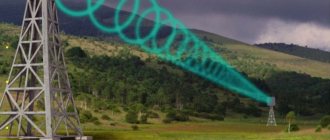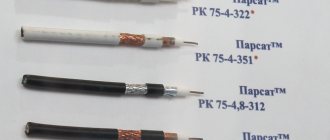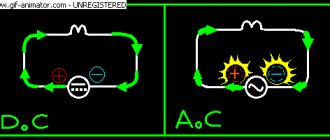When Apple introduced its first wireless charger for cell phones and gadgets, many considered it a revolution and a huge leap forward in wireless power transfer methods.
But were they pioneers, or even before them, did someone manage to do something similar, albeit without proper marketing and PR? It turns out there were, and a very long time ago, and there were many such inventors.
So, back in 1893, the famous Nikola Tesla demonstrated the glow of fluorescent lamps to the amazed public. Despite the fact that they were all wireless.
Now this trick can be repeated by any schoolchild by going out into an open field and standing with a fluorescent lamp under a high voltage line of 220 kV and above.
A little later, Tesla managed to light a phosphorus incandescent light bulb in the same wireless way.
In Russia in 1895, A. Popov showed the world's first radio receiver in operation. But by and large, this is also a wireless transfer of energy.
The most important question and at the same time the problem of the entire technology of wireless charging and similar methods lies in two points:
- how far can electricity be transmitted this way?
- and what quantity
First, let's figure out what power the devices and household appliances around us have. For example, a phone, smartwatch or tablet requires a maximum of 10-12W.
The laptop already has higher demands - 60-80W. This can be compared to the average incandescent light bulb. But household appliances, especially kitchen appliances, already consume several thousand watts.
Therefore, it is very important not to skimp on the number of outlets in the kitchen.
So what methods and methods for transmitting electrical energy without the use of cables or any other conductors has mankind come up with over all these years? And most importantly, why are they still not implemented as actively into our lives as we would like?
Take the same kitchen appliances. Let's take a closer look.
High voltage as a way to reduce losses
The reality is that transmitting electricity over long distances is inevitably accompanied by losses. A significant part of the electricity, passing from the generator at the power plant to the outlet of the household consumer, turns into heat and is spent on heating the atmosphere. However, this does not reduce the cost of generating electricity, so the end user still has to pay for these non-target costs.
The following methods allow you to reduce unnecessary losses, respectively, expenses:
- use of high-temperature superconductors;
- increasing the cross-section of cables and wires of power lines;
- increase in voltage in transmission lines.
The first method is the future. However, today it is technically infeasible. The second was abandoned in the first couple of years of development of the electric power industry, because it is not economically feasible due to the extra costs of thickening the conductors. The use of high voltage has proven to be the most successful method, which is why it has been used around the world for about a hundred years.
RESEARCH
RESULTS ½ÐµÐ½Ð½ÑÑ Ð³ÐµÐ½ÐµÑаÑоÑов ÑлекÑÑоÑнеÑгии. RESULTS, RESEARCH RESULTS ¿ÑоиÑÑождениÑ. RESULTS ASSURANCE, ASSURANCE, ASSURANCE RELATED ·ÑеÑÑÑ Ð² меÑаниÑеÑкÑÑ. RESULTS , ÑголÑ, мазÑÑ Ð¸ Ñ. д. RESULTS " и Ñегионе . RESULTS ROOM ´ÑÑва ÑлекÑÑоÑнеÑгии, а ТÐÐ¦Ñ (ÑеплоÑлекÑÑоÑе RESEARCH) RESEARCH "SOS RESULTS RESULTS.
Classification of power lines
Wireless power transmission
There are many types of power lines. Each type is tailored to its specific needs and tasks. In accordance with this, the PUE regulates the following classification of overhead power lines.
According to the voltage class of power lines there are:
- low voltage, up to 1 kV;
- high voltage, over 1 kV.
By purpose:
- Intersystem lines with voltage from 500 kV and above;
- Main lines, 220-500 kV;
- Distribution, 110-220 kV;
- 35 kV lines for powering agricultural consumers;
- 1-20 kV power lines used within one populated area.
The type of electric current in power lines is divided into:
- variable (almost all lines);
- direct current (rarely found, mainly 3.3 kV railway contact network).
RESULTS
RESULTS SMALL SAME. RESULTS RESPONSIBILITY ¸Ñ и ASSURANCE the µÐ»Ñ. RESULTS RESULTS нÑм ÑеÑÑм. Ð ÑаÑÑноÑÑи, вÑделÑÑÑÑÑ Ñ»ÐµÐ´ÑÑÑие Ñазновидно CONTENT:
- СеÑи Ñ Ð¾Ð±Ñим назнаÑением. RESPONSIBILITY, ASSURANCE, CONDITION нÑе, пÑомÑÑленнÑе и ÑелÑÑкоÑозÑйÑÑвеннÑе н ÑждÑ.
- RESULTS. RESULTS °Ñ обÑлÑÐ¶Ð¸Ð²Ð°ÐµÑ ÑÑанÑпоÑÑнÑе ÑÑедÑÑва, пР¸ÑаÑÑиеÑÑ ÑнеÑгией в пÑоÑеÑÑе движениÑ. RESULTS ¸ дÑ.
- RESEARCH Ñ Ð¾Ð±ÑекÑов. RESULTS ° CONTROL RESULTS ROLLUP
- СеÑи Ð´Ð»Ñ Ð°Ð²Ð¾Ð½Ð¾Ð¼Ð½Ð¾Ð³Ð¾ ÑнабжениÑ. RESULTS ´Ð¸Ð½Ð¸ÑÑ, ÑÑеди коÑоÑÑÑ - Ñе же ÑÑанÑии, ÑамолеÑÑ , SOS, s.r.o., s. д.
Methods of transmitting electricity
Determination of power quality by analyzers
The most common two methods of transmitting electricity are using overhead and cable lines. They differ from each other in range and environment in which the conductor is located.
Overhead lines are, simply put, copper or aluminum conductors suspended through insulators on metal or reinforced concrete supports. With this method, it is possible to transmit electricity over long distances and between different countries.
Cable line - laying wires underground. Individual current-carrying conductors are located, as a rule, in rubber or PVC insulation. If the voltage is high, then there is also armor made of metal tape. It also serves as a shield against interference. It is found mainly within the city or enterprise.
Cable routing
Additional Information. Using cable lines, it is possible to transport electricity along the bottom of reservoirs and even seas. This allows electricity to be supplied to the islands. The use of power lines does not imply such possibilities.
ROOM
RESPONSIBILITY › ение. Так же как и вÑе пÑодÑкÑÑ Ð½Ð° ÑÑнке, ÑнеÑгоÑеÑÑÑÑÑ Ð¿ÑодаÑÑÑÑ, но в данном ÑлÑÑае ÑÑÐµÐ¼Ñ ÑеалР¸Ð·Ð°Ñии Ñложнее. RESULTS OPTIONAL RESEARCH иР¸ ROCK ROOM ¸Ñе или пÑоизводÑÑвенном обÑекÑе. RESULTS ROOM, ROOM · ¸Ð¸.
RUSSIAN RESULTS. RESULTS ½Ð³Ð¾Ð¼, пÑедполагаÑÑим покÑÐ¿ÐºÑ ÑеÑÑÑÑа на оп¿Ñ овом " S. RESULTS ¼Ð¸ компаниÑми, коÑоÑÑе занимаÑÑÑÑ Ð¿Ñод ажами ÑозниÑно. RESPONSIBILITY ´returned ¸ Ñелей Ñ Ð¿Ð¾ÑледÑÑÑими ÑаÑеÑами. RESULTS RESEARCH RESULTS .
Scheme of energy transfer from power plant to consumer
Electricity consumption of household appliances
The main power plant (1) produces a voltage of about 10-12 kV. It is then raised by transformer (2) to a higher level: 35, 110, 220, 400, 500 or 1150 kV. Then, via a cable or overhead line (3), the energy is transmitted over distances from units to thousands of kilometers and reaches a step-down substation. It also has a transformer (4) installed on it, which converts hundreds of kilovolts back into 10-12 thousand volts. This is followed by another step-down stage to 380/220 V (5). This voltage is final and is distributed to consumers (6), i.e. residential buildings, hospitals, etc.
Transportation of electrical energy
List of used literature
Venikov V.A., Long-distance power transmission, M.–L., 1960; Sovalov S. A., Power transmission modes 400–500 sq. EES, M., 1967; Bessonov, L.A. Theoretical foundations of electrical engineering. Electric circuits: textbook / L.A. Bessonov. — 10th ed. - M.: Gardariki, 2002. Electrical engineering: Educational and methodological complex. /AND. M. Kogol, G. P. Dubovitsky, V. N. Borodyanko, V. S. Gun, N. V. Klinachev, V. V. Krymsky, A. Ya. Ergard, V. A. Yakovlev; Edited by N.V. Klinachev. - Chelyabinsk, 2006-2008. Electrical systems, vol. 3 - Energy transmission by alternating and direct current of high voltage, M., 1972. Yavorsky B. M., Detlaf A. A., Handbook of physics for engineers and university students, M.: Nauka, - 2- ed., - 1964, - 848 p. BOSCH car directory. Translation from English First Russian edition. – M.: Behind the Wheel, 2002. – 896 p. Associate Professor of the MCA Department Kuznetsov M.I., Brief lecture notes on the course “Electromechanical systems”. – Perm, 2001. Bogdanov K.Yu., Physics. Grade 11. Textbook. - M.: Education, 2010. - 208 p. Myakishev G.Ya., Bukhovtsev B.B., Sotsky N.N., Physics. Grade 11. Textbook. 19th ed. - M.: Education, 2010. - 399 p. Electrical networks, equipment, documentation, instructions Practical electronics Electrical engineering School for an electrician Physics portal for schoolchildren Brainstorming a transformer Electrical engineering portal for university students and engineers
Sorry, nothing found.
Transformer substations
Transformer substations are used to convert voltage from one value to another. They are a fenced facility that has a transformer on its territory. Inside it are the primary and secondary windings (coils). Their electromagnetic interaction allows energy to be converted with high efficiency. Overhead lines or cables enter the substation with one voltage and exit with another, usually lower.
A step-down transformer
All kinds of electricity control and metering systems and switchgear (RU) are also located there. It is intended for communication with other objects of the power system and is an integral part of the transformer substation. The switchgear allows you to disconnect an individual consumer on the low voltage side without de-energizing everyone else.
Power line capacity
The voltage at the end of the line is inevitably lower than at the beginning. Voltage is lost through the resistance of power line wires. It is this voltage difference that is wasted to heat the universe.
This problem makes it impossible to create a power line of infinite length and transmit unlimited power along it. Therefore, the concept of transmission line capacity was introduced. This characteristic primarily depends on the length of the line, the metal from which its wires are made and their cross-section. Losses in copper are less noticeable than in aluminum. The thicker the wires, the higher the line capacity.
Microwave
Microwaves are special lines with a length of 12 centimeters and a frequency of 2.45 gigahertz, which are transparent to the atmosphere. Regardless of the weather, the energy loss will be 5%. First, it is necessary to convert the electric current into microwaves, then detect them and return them to the first state. The first problem was solved thanks to the installation of a magnetron, and the second - thanks to a rectenna or a special antenna.
You may be interested in this Features of the DRL 250 lamp
Microwave energy transfer
Electricity losses
The reasons for losses when transmitting electrical energy over a distance lie in the structure of the substance. Electric current is the directed movement of free charge carriers along a conductor. In the case of power lines and cables, their role is played by electrons. These particles, passing through the cross-section of the wire, inevitably collide with the surrounding atoms of copper or aluminum and impart to them part of their kinetic energy. Due to this impact, metal microparticles become more mobile, which is perceived by the human senses as an increase in temperature.
The amount of heat Q released in the conductor during time t and wasted is calculated according to the Joule–Lenz law. I flowing in the wire and its resistance R :
Q = I2Rt.
Additional Information. There are also electricity losses in the transformer. The largest of these include the energy costs of creating eddy currents in the core and heating the windings.
Electric power industries
The list of industrial sources of electrical energy production consists of 4 energy sectors:
- atomic;
- thermal;
- hydropower;
- alternative.
Nuclear power
This branch of energy production is today the most effective way to generate electricity through a nuclear reaction. For this purpose, purified uranium is used. The heart of the station is the nuclear reactor.
Nuclear reactor operation diagram
The heat sources are fuel elements (fuel elements). They are thin, long zirconium tubes containing uranium tablets. They are combined into groups - fuel assembly (fuel assembly). They load the reactor vessel, in the body of which there are pipes with water. During the nuclear decay of uranium, heat is released, which heats the water in the primary circuit to 3200.
The steam flows to turbine blades, which rotate alternating current generators. Electricity enters the general energy system through transformers.
Note! Remembering the Chernobyl tragedy, scientists around the world are improving the safety system of nuclear power plants. The latest developments in nuclear energy ensure almost 100% harmlessness of nuclear power plants
View of the nuclear power plant
Thermal energy
Thermal power plants operate on the principle of burning natural fuels: coal, gas and fuel oil. Water passing through pipelines through boilers is converted into steam and is subsequently supplied to the blades of generator turbines.
Additional Information. Over 4 years of operation of one group of fuel rods, such an amount of electricity is generated that the thermal power plant will need to burn 730 natural gas tanks, 600 coal cars or 900 oil railway tankers.
In addition, thermal power plants greatly worsen the environmental situation in the areas where they are located. Fuel combustion products heavily pollute the atmosphere. Only stations operating on gas turbine units meet the requirements of environmental cleanliness.
Hydropower
Examples of the effective use of hydropower are the Aswan, Sayano-Shushenskaya hydroelectric power stations, etc. The most environmentally friendly power plants that use the kinetic energy of water movement do not produce any harmful emissions into the environment. However, the mass construction of hydraulic structures is limited by a combination of circumstances. This is the presence of a certain amount of natural water flow, a feature of the terrain, and much more.
hydroelectric power station
alternative energy
The scientific and technological revolution does not stop for a minute. Every day brings innovations in the production of electric current. Inquisitive minds are constantly busy searching for new technologies for generating electricity, which act as an alternative to traditional methods of generating electricity.
Mention should be made of wind generators, tidal sea stations and solar panels. Along with this, devices appeared that generate electric current using the heat of decomposition of household waste and livestock waste products. There are devices that use the temperature difference between different layers of soil, the alkaline and acidic environment of the soil at different levels. Alternative sources of electricity have one thing in common - this is the incomparability of the amount of energy generated with the amount of electricity that is obtained by traditional methods (nuclear power plants, thermal power plants and hydroelectric power plants).
Transmitting electricity over long distances
If the transmission of electrical energy is carried out over a distance of hundreds of kilometers, then overhead lines are used. Their construction is significantly cheaper compared to cables laid underground. Power lines are capable of connecting neighboring countries into a common network. In addition, they are easier to operate, because the wires are in the open air. This factor simplifies the inspection of the technical condition of the line and allows you to predict its failures in advance.
Construction of 750,000 volt power lines
Direct current as an alternative
Most of the power lines used in the world today run on alternating current. However, there are exceptions. In some cases, the use of direct current is more effective:
- there is no need to synchronize generators operating in different power systems;
- losses due to capacitive and inductive resistance of the cable are reduced to zero;
- the cost of the line is reduced, because only 2 conductors are enough to transmit direct current;
- the possibility of using alternating current power lines on already built power lines, i.e. no need to build new highways;
- reduction of electromagnetic radiation arising when changing the direction of current.
Additional Information. Most household electrical appliances can operate on DC current. These include light bulbs, Internet routers, drills, heaters and much more. Alternating current is necessary only for certain types of engines, which are extremely rare in everyday life.
The ability to transmit electric current over vast distances served as a decisive factor for the development of all mankind. However, the industry does not stand still, so scientists are now working to make energy transportation even more efficient and cheaper.
V. GOELRO
Story
GOELRO (State Commission for Electrification of Russia) is a body created on February 21, 1920 to develop a project for the electrification of Russia after the October Revolution of 1917.
Over 200 scientists and technicians were involved in the work of the commission. The commission was headed by G.M. Krzhizhanovsky. The Central Committee of the Communist Party and V.I. Lenin personally daily directed the work of the GOELRO commission and determined the main fundamental provisions of the country’s electrification plan.
By the end of 1920, the commission had done a lot of work and prepared the “Electrification Plan of the RSFSR” - a volume of 650 pages of text with maps and diagrams of electrification of areas. The GOELRO plan, designed for 10-15 years, implemented Lenin’s ideas of electrifying the entire country and creating a large industry. In the field of the electric power industry, the plan consisted of a program designed for the restoration and reconstruction of the pre-war electric power industry, the construction of 30 regional power stations, and the construction of powerful regional thermal power plants. The power plants were planned to be equipped with boilers and turbines that were large for that time. One of the main ideas of the plan was the widespread use of the country's enormous hydropower resources. A radical reconstruction based on the electrification of all sectors of the country's national economy and mainly the growth of heavy industry and the rational distribution of industry throughout the country were envisaged. The implementation of the GOELRO plan began in difficult conditions of the Civil War and economic ruin.
Since 1947, the USSR has ranked 1st in Europe and 2nd in the world in electricity production.
The GOELRO plan played a huge role in the life of our country: without it, it would not have been possible to bring the USSR into the ranks of the most industrially developed countries in the world in such a short time. The implementation of this plan shaped the entire domestic economy and still largely determines it.
The drawing up and implementation of the GOELRO plan became possible solely due to a combination of many objective and subjective factors: the considerable industrial and economic potential of pre-revolutionary Russia, the high level of the Russian scientific and technical school, the concentration in one hand of all economic and political power, its strength and will, as well as the traditional conciliar-communal mentality of the people and their obedient and trusting attitude towards the supreme rulers. The GOELRO plan and its implementation proved the high efficiency of the state planning system in conditions of strictly centralized government and predetermined the development of this system for many decades.
results
By the end of 1935, the electrical construction program was exceeded several times.
Instead of 30, 40 regional power plants were built, at which, together with other large industrial stations, 6,914 thousand kW of power were commissioned (of which 4,540 thousand kW were regional - almost three times more than according to the GOELRO plan). In 1935, among the regional power plants there were 13 power plants with 100 thousand kW each.
Before the revolution, the capacity of the largest power plant in Russia (1st Moscow) was only 75 thousand kW; there was not a single large hydroelectric power station. By the beginning of 1935, the total installed capacity of hydroelectric power stations reached almost 700 thousand kW. The largest hydroelectric power station in the world at that time, the Dnieper hydroelectric station, Svirskaya 3rd, Volkhovskaya, etc., were built. At the highest point of its development, the Unified Energy System of the USSR was superior in many respects to the energy systems of developed countries in Europe and America.
Electricity was virtually unknown in villages before the revolution. Large landowners installed small power plants, but their numbers were few.
Electricity began to be used in agriculture: in mills, feed cutters, grain cleaning machines, and sawmills; in industry, and later in everyday life.











